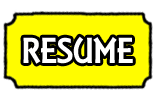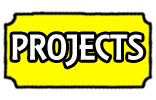



iBC's iPhone Prototype
Introduction
iBC's is an educational and entertaining tool that allows children to creatively learn their ABC's and 123's. Through various tasks like letter tracing and object matching, children become immersed in a portable, colorful, and interactive learning environment that allows parents to attend to their daily errands without worry. iBC's builds on the proven method of learning through association by accompanying every letter with a familiar object and aims to help begin the child's learning phase as early as three years old by including an easy-to-use interface with audio prompts.
Motivation
Our target users are children learning their ABCs, approximately between the ages of 3 and 6, and their parents. They face a problem: the lack of a good mobile source for both education and entertainment, allowing parents to work and do chores without having to worry about keeping their child entertained, and providing the parents peace of mind that their child is learning, too.
Existing Applications and Our Benefits
Existing solutions are fundamentally limited. The mobility of the iPhone is far better than that of even a leapfrog game, and workbooks with writing implements can't compare at all. Other solutions are also limited; there are connect-the-dots and coloring games, and there are matching games, and there are letter tracing exercises, but the three elements are kept seperately, whereas our app provides a single convenient package that merges the entertainment and education into one.
Current solutions are also limited to static content, like single-use workbooks and glorified flashcard apps with letter tracing. Our matching game is dynamically generated to provide new experiences with each playthrough, keeping the app engaging and entertaining while children learn. By taking advantage of the mobility, flexibility, and computing power of the iPhone, iBCs is able to provide a user experience that existing solutions fall drastically short of.
Implementation
One major technical hurdle in the implementation of our app was the character recognition. The best available option was using the open-source Tesseract library, but Tesseract is written in C++ and integrating its config and makefiles into an XCode project didn't work out well. Instead we ended up compiling it for the iPhone and including the compiled library and header files in our project.
Additionally, we found that the default English character set didn't match our drawings well, so we built a custom interface to correct for the consistent but inaccurate results Tesseract returns as a stopgap until we can properly train the system with a custom characterset.
For more information on the project go to: http://vis.berkeley.edu/courses/cs160-sp10/wiki/index.php/GroupM
| Email: | alexli@berkeley.edu |
| Number: | (805) 302-0382 |
| Address: | 1252 Inca Drive |
| School: | University of California, Berkeley |
| Major: | Electrical Engineering and Computer Science (Graduated: May 2010) |